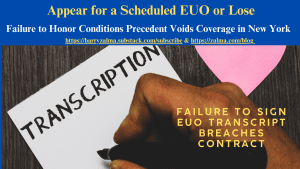How Can You Ensure Comprehensive Coverage With House Insurance?

Imagine you’re constructing a puzzle, and each piece represents an aspect of your house insurance coverage—it’s vital to have every piece in place to see the full picture. By evaluating your home’s value and understanding local risks, you can start to identify the essential components of your policy. But how do you guarantee you haven’t missed any critical parts, like personal belongings or liability protection? To craft a policy that truly protects your home and possessions, you’ll need to take into account several key factors, including policy types and coverage limits. Let’s explore the steps to achieve this.
Key Takeaways
– Evaluate your home’s value, including rebuilding costs and personal belongings, to determine accurate coverage needs.
– Familiarise yourself with various policy types, like HO-3, and consider additional endorsements for customised protection.
– Regularly update your policy to reflect home renovations, new acquisitions, and life changes to avoid underinsurance.
– Add riders for high-value items and specific risks not covered by standard policies.
– Conduct annual reviews with your insurance agent to adjust coverage limits and ensure comprehensive protection.
Assess Your Coverage Needs
When it comes to house insurance, understanding and reviewing your coverage needs is essential. You can’t afford to overlook the true value of your home and the specific risks in your area.
Start by evaluating your home’s value. This includes not just the market price, but also the cost to rebuild in case of total destruction. Factor in materials, labour, and current building codes.
Next, consider local risks. Are you in an area prone to natural disasters like floods, hurricanes, or earthquakes? Your location greatly impacts the type and amount of coverage you’ll need. For instance, living in a flood zone necessitates additional flood insurance, which isn’t typically covered under standard policies.
Don’t just think about the structural aspects of your home. Review the value of your personal belongings as well. High-value items like electronics, jewellery, and art may require additional coverage beyond the standard policy limits.
Understand Policy Types
Choosing the right type of house insurance policy can be challenging, but understanding the different options is essential to ensuring your home is adequately protected.
To start, familiarise yourself with policy definitions to distinguish between standard types like HO-1, HO-2, HO-3, and HO-5. Each offers varying levels of protection, from basic named-perils coverage to extensive open-perils policies. HO-3 is the most commonly chosen, offering broad coverage for your home and named-perils for your personal belongings.
When selecting a policy, consider premium factors such as your home’s location, construction type, and age. Insurers also evaluate your credit score and claims history, directly impacting your premium.
You might be tempted to opt for a cheaper policy, but skimping on coverage can leave you vulnerable to significant financial loss.
Don’t overlook additional endorsements or riders that can customise your policy to better suit your needs. For instance, if you own high-value items like jewellery or art, you’ll want a rider for extra protection beyond standard limits.
Evaluate Coverage Limits
Evaluating coverage limits is essential to ensuring your home and belongings are fully protected in the event of a loss. You need to start with a precise coverage evaluation to determine whether your current policy limits are sufficient.
Don’t just guess—take a detailed inventory of your home’s structure and the cost to rebuild it in today’s market. Factor in labour, materials, and any unique architectural elements.
Next, scrutinise your personal property coverage. Does it reflect the true value of your possessions? High-value items like electronics, jewellery, and collectibles often require additional riders.
By knowing the exact replacement costs, you can avoid being underinsured.
Once you’ve assessed your needs, it’s time for policy adjustments. Contact your insurance provider to discuss increasing your coverage limits if necessary. This proactive step can save you from financial distress later.
Include Personal Belongings
Including personal belongings in your house insurance coverage is fundamental to safeguarding your investments. You’ve worked hard to acquire valuable items, so making sure they’re covered in case of damage, theft, or loss is critical.
Start by conducting a thorough personal property valuation. This process involves evaluating the worth of your belongings, which helps determine the coverage amount you need.
Creating an itemised inventory is an essential step. Document each significant item in your home, including electronics, jewellery, artwork, and furniture. Take clear photos, note serial numbers, and keep receipts if possible. This detailed list not only facilitates the personal property valuation but also simplifies the claims process if you ever need to file one.
Regularly updating your inventory guarantees that new acquisitions are covered, and you’re not underinsured. It’s also wise to check if your policy has limits on certain high-value items.
If it does, consider purchasing additional riders to guarantee full coverage. By meticulously itemising your possessions and valuing them accurately, you can rest assured that your house insurance will adequately protect your personal belongings, giving you peace of mind and financial security.
Consider Liability Protection
Imagine a scenario where a guest slips on your icy driveway or a neighbour’s child is injured while playing in your yard—liability protection in your house insurance can cover these unforeseen events.
As a homeowner, your responsibilities extend beyond maintaining your property; you’re also accountable for injuries or damages that occur on your premises. Without liability protection, you could face steep medical bills, legal fees, and even lawsuits.
Liability protection shields you from the financial strain of such incidents. It covers medical expenses for the injured party, legal defence costs if you’re sued, and any settlements or judgments against you. This type of coverage is invaluable, especially when considering the legal implications of accidents.
Even minor injuries can result in significant financial burdens and legal disputes.
It’s essential to evaluate the liability limits in your policy. Confirm they’re sufficient to protect your assets. Don’t assume a standard policy will cover all potential scenarios—assess your specific needs.
Consult with your insurance agent to adjust your coverage accordingly. By addressing these homeowner responsibilities proactively, you safeguard your financial well-being and maintain peace of mind.
Review Exclusions and Conditions
When reviewing your house insurance policy, take special care to understand the exclusions and conditions that apply. These elements can greatly impact your coverage, so it’s vital to know what’s covered and what isn’t. Common exclusions often include things like natural disasters, wear and tear, and certain high-value items. Knowing these details helps you avoid unpleasant surprises when you file a claim.
Key areas to scrutinise:
– Natural Disasters: Floods, earthquakes, and hurricanes are typically not covered. You might need separate policies for these.
– Wear and Tear: Regular maintenance issues like plumbing problems or roof deterioration usually fall under exclusions.
– High-Value Items: Jewellery, fine art, and collectibles often have limited coverage unless specifically listed.
Beyond exclusions, focus on the policy conditions. These conditions dictate your responsibilities, such as maintaining your home or reporting damages promptly. Failing to meet these conditions can result in denied claims.
For example, if your policy requires you to install a security system and you haven’t, a theft claim could be denied.
Add Riders for Extra Protection
To bolster your house insurance coverage, consider adding riders for extra protection. Riders, also known as endorsements, allow you to customise your policy to address specific needs not covered by standard homeowners insurance.
There are several rider types available, each designed to offer unique benefits. For instance, a valuable personal property rider can protect high-value items like jewellery, artwork, and collectibles. Another common type is the water backup rider, which covers damages from sewer or drain backups that aren’t typically included in a standard policy.
Understanding rider costs is vital. While adding riders will increase your premium, the added protection is often worth it. For example, a jewellery rider might cost $1-$2 per $100 of coverage annually, providing peace of mind for your valuable items.
On the other hand, a water backup rider might add around $30 to $100 annually, depending on your home’s risk factors.
When evaluating which riders to add, carefully assess your home’s unique risks and the value of your possessions. By investing in the right rider types, you guarantee your home is thoroughly protected against unforeseen events, giving you extensive coverage and peace of mind.
Regularly Update Your Policy
In addition to adding riders for extra protection, guaranteeing your house insurance policy remains effective means regularly updating it. Your home and personal circumstances change over time, and so should your insurance policy. By revisiting your policy frequency, you’ll be better equipped to make necessary coverage adjustments.
Consider the following scenarios that might necessitate an update:
– Renovations: If you’ve added a new room, updated your kitchen, or made any significant changes to your home, your current policy mightn’t cover the increased value.
– Acquiring Valuable Items: New electronics, jewellery, or art pieces can add substantial value to your home. Make sure these items are included in your coverage.
– Life Changes: Marriage, having children, or even starting a home business can all affect your insurance needs.
Regular policy reviews help you identify coverage gaps and guarantee you’re not underinsured. This proactive approach also allows you to remove unnecessary coverage, optimising your policy.
Speak with your insurance agent annually to discuss any changes and make immediate updates. By doing so, you’ll maintain extensive coverage and peace of mind. Stay vigilant and keep your insurance aligned with your life.
Frequently Asked Questions
How Can I Reduce My House Insurance Premium Without Compromising Coverage?
You can reduce your house insurance premium by choosing higher deductible options and installing security systems. Many insurers offer security discounts for alarm systems or surveillance cameras, ensuring you maintain extensive coverage while saving money.
What Steps Should I Take After Filing a House Insurance Claim?
After filing a house insurance claim, immediately gather all claim documentation. Regularly follow up with your insurance company to guarantee a smooth process. Staying proactive and organised will maximise your chances of a timely, favourable settlement.
How Does My Home’s Location Affect My Insurance Rates?
Ever wondered why your home’s location affects your insurance rates? Location risks and neighbourhood crime greatly influence premiums. High-crime areas or flood zones lead to higher rates, so it’s essential to take these factors into account when choosing a home.
Can Home Improvements Impact My House Insurance Policy?
When you make home modifications, you should contact your insurer for an insurance reassessment. Upgrades like security systems or energy-efficient installations can lower premiums, while major renovations might require additional coverage to guarantee your policy remains all-encompassing.
What Is the Process for Switching House Insurance Providers?
Think of switching house insurance providers like renovating a castle. First, do a policy comparison to see what suits you best. Then, verify there are no coverage gaps when moving. Be meticulous and you’ll protect your kingdom.
Conclusion
To guarantee you’re fully protected, regularly update your house insurance policy. Imagine you’ve just renovated your kitchen with high-end appliances. Without revisiting your coverage, you might find yourself underinsured if disaster strikes. Stay proactive, assess your home’s evolving needs, and consult with your insurance agent to tailor your policy. This diligence guarantees that you won’t face financial setbacks, giving you peace of mind knowing your home and possessions are thoroughly covered.






